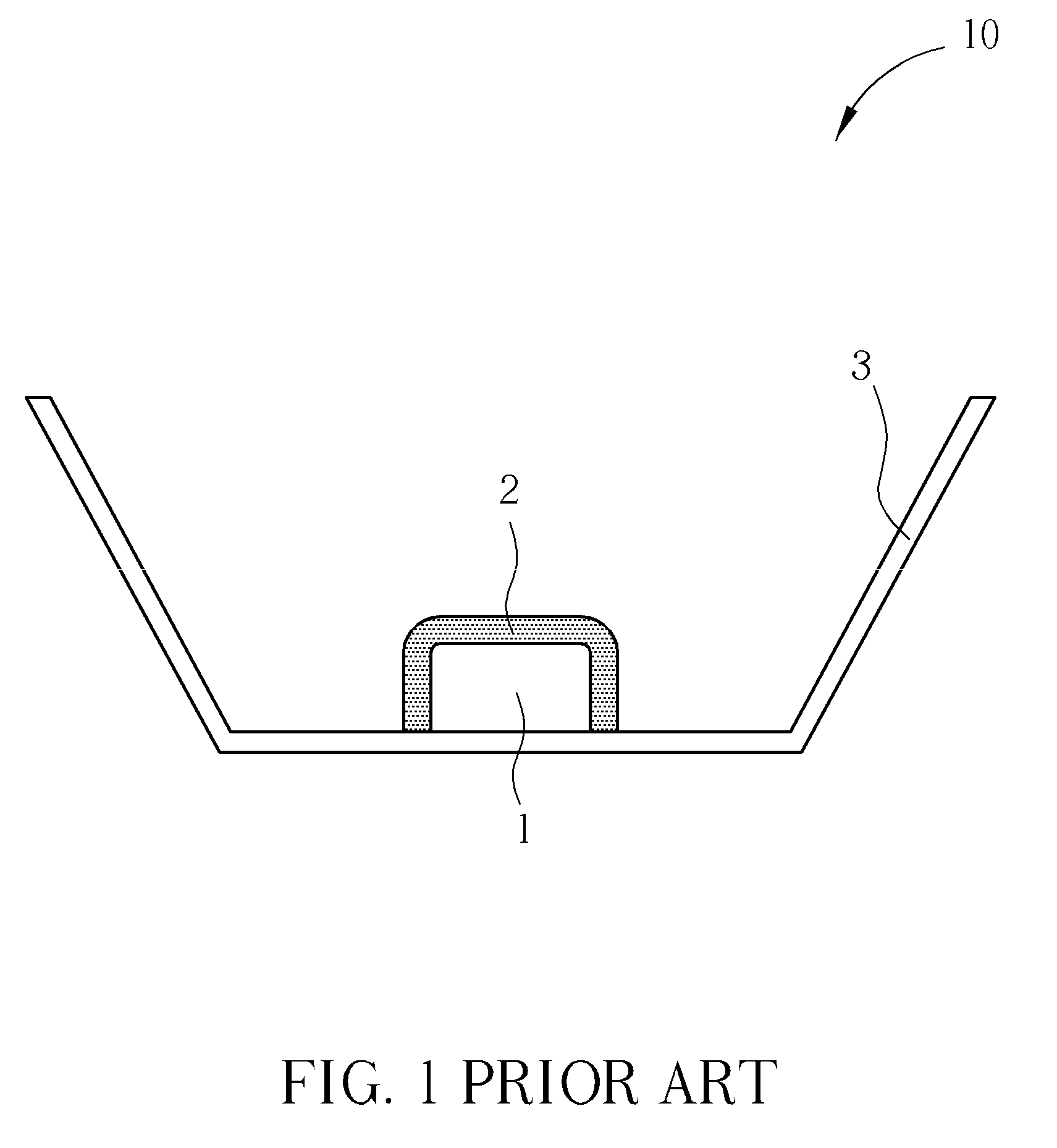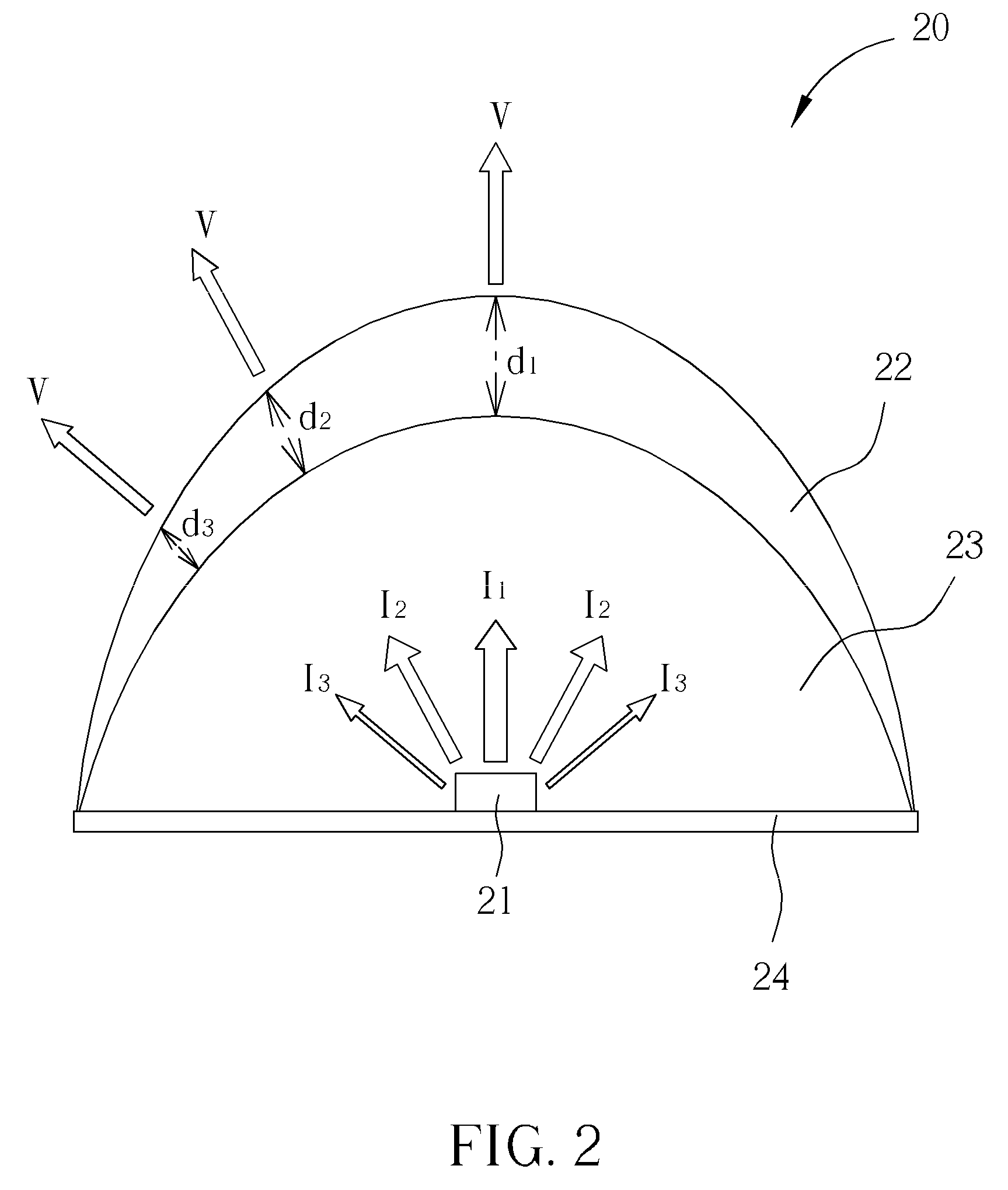Photoelectric semiconductor device capable of generating uniform compound lights
a photoelectric semiconductor and light-emitting diode technology, applied in the direction of semiconductor devices, basic electric elements, electrical equipment, etc., can solve the problems of only being able to use flip-chip type leds, increase manufacturing costs, and complicate the procedur
- Summary
- Abstract
- Description
- Claims
- Application Information
AI Technical Summary
Problems solved by technology
Method used
Image
Examples
first embodiment
[0023]Please refer to FIG. 2. FIG. 2 is an illustration of a first exemplary embodiment of a light emitting diode (LED) 20 capable of generating uniform compound lights according to the present invention. The LED 20 includes a chip 21, a base 24, a first layer 23, and a second layer 22. The chip 21 is fixed on the base 24 and can be chips of direct-emitting, lateral-emitting, or flip-chip forms that can emit 400 nm 470 nm blue lights or 300 nm 400 nm ultraviolet lights. The base 24 can be a metal substrate, a printed circuit board (PCB), a ceramic substrate, a high polymer plastic substrate, a plastic leaded chip carrier (PCLL), or a substrate formed by other compound material. The inner first layer 23 covers directly on the chip 21 and in the embodiment, the first layer 23 can be transparent high polymer colloid such as epoxide, silica gel, or other high polymer compound and is used for separating the chip 21 and the second layer 22 to enhance the light emission efficiency. The tra...
second embodiment
[0024]Please refer to FIG. 3. FIG. 3 is an illustration of a second exemplary embodiment of a light emitting diode (LED) 30 capable of generating uniform compound lights according to the present invention. The LED 30 includes a chip 31, a base 34, a first layer 33, and a second layer 32, where the chip 31 is fixed on the base 34. The second layer 32 is designed to have different concentration of phosphor powder in different section corresponding to different light emitting angle to generate uniform compound lights after the light passing through the second layer 32. For example, a first section of the second layer 32 has concentration D1 that corresponds to the light emitting strength I1, a second section has concentration D2 that corresponds to the light emitting strength I2, and a third section has concentration D3 that corresponds to the light emitting strength 13. In the second embodiment, D1>D2>D3, and the concentration of each section is further designed to satisfy the followi...
PUM
 Login to View More
Login to View More Abstract
Description
Claims
Application Information
 Login to View More
Login to View More - Generate Ideas
- Intellectual Property
- Life Sciences
- Materials
- Tech Scout
- Unparalleled Data Quality
- Higher Quality Content
- 60% Fewer Hallucinations
Browse by: Latest US Patents, China's latest patents, Technical Efficacy Thesaurus, Application Domain, Technology Topic, Popular Technical Reports.
© 2025 PatSnap. All rights reserved.Legal|Privacy policy|Modern Slavery Act Transparency Statement|Sitemap|About US| Contact US: help@patsnap.com



